Ditch the store bought Mayo!
Oh Lardy! is a participant in the Amazon Services LLC Associates Program, an affiliate advertising program designed to provide a means for us to earn fees by linking to Amazon.com and affiliated sites.
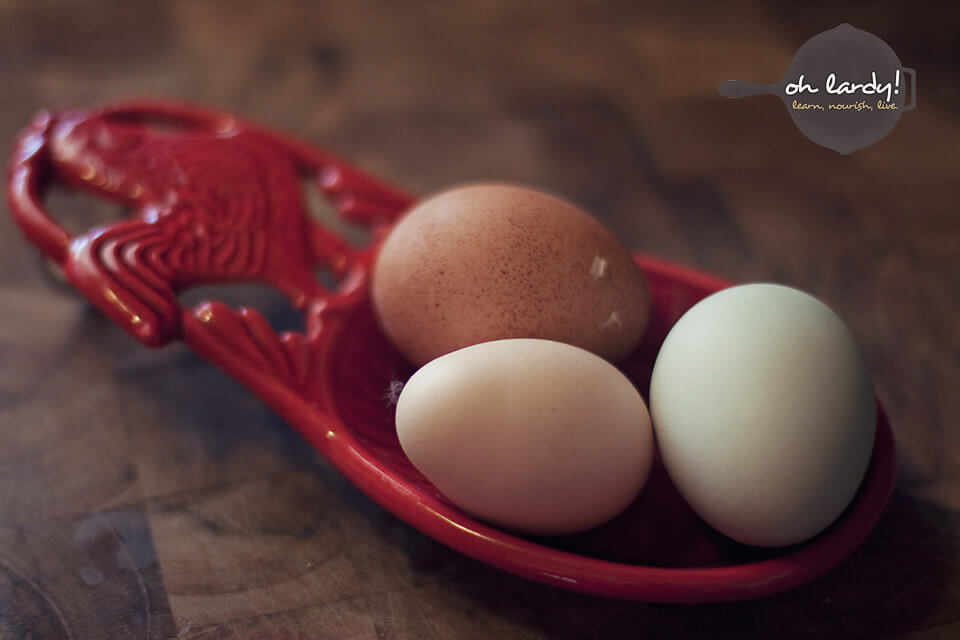
If you happen to be a newbie in the Real Foods arena, one of the simplest things you can do is to make your own condiments. Personally, I started with Mayonnaise. By mastering the basics (homemade broth, dressings, sauces, marinades, condiments, etc) you set a great foundation from which to build your healthy kitchen.
When I cleaned out our kitchen and pantry, one of the first things I threw away was our go-to mayonnaise. Most store bought Mayo is not “Real” even though the label may say so. I found this ingredient list on a popular Mayonnaise brand:
- SOYBEAN OIL, WATER, WHOLE EGGS AND EGG YOLKS, VINEGAR, SALT, SUGAR, LEMON JUICE, CALCIUM DISODIUM EDTA (USED TO PROTECT QUALITY), NATURAL FLAVORS. GLUTEN-FREE.
Three ingredients on this list are red flags. First, soybean oil. This is a highly processed oil that is most likely genetically modified. It isn't real. Second, “natural flavors.” This is a commonly used label for MSG. And last, “calcium disodium EDTA.” What the heck is that? Since I didn't recognize it as food, I threw it out. Learning how to read labels is definitely essential in transforming your kitchen. After the “red flags” I listed, my secondary thoughts concern the feed that is given to the chickens that lay those eggs (is it GMO-free? Probably not) and the salt and sugar. Exactly how much salt and sugar?
Internet searches for “Homemade Mayo” returned countless recipes. However, I noticed all contained eggs, oil, vinegar or lemon juice, and salt. In order to make this mayo nourishing, I needed to specify my ingredients. Most Real Food websites list olive oil and coconut oil as the suitable oil for mayo. I also learned that if I add whey to my mayo and allow it to lacto-ferment for several hours it adds enzymes to boost the nutrient content, and I can preserve it for several months. Nourishing Traditions states, “The lactic acid produced by the bacteria during incubation prevent the growth of other bacteria at low temperatures. Fermentation delays the oxidation of unsaturated oils, which form the basis of the [mayo], because the added bacteria consume all the oxygen. Fermentation also produces a pleasant, mildly sour taste many consumers prefer.” (page 137)
I have tried many different combinations of ingredients for homemade mayo. I have made it with lemon juice. My hubby said it was too lemon-y. I have made it with coconut oil. He said it was too coconut-y. I have used olive oil and he said it was too olive-y. I have done half olive oil and half coconut oil. I thought it was fantastic. My hubby didn't. I am telling you right now that it is one of my life's missions to find a homemade mayo recipe that he likes. Tamara has added bacon fat to her mayo. That sounds amazing and it may just be what my husband needs. I will have to try it.
Currently, I have not found a recipe that my husband loves. I do think that this particular recipe is decent, so I continue to use it. I would like to try using a refined coconut oil (no coconut essence), but I haven't gotten around to that quite yet. I realize that “unrefined” is much better than “refined” but I think refined coconut oil is much better than soybean or canola oil.
First, I grabbed three of the eggs that our hens left for us out of the fridge. I let these warm up to room temperature. This is VERY important. Cold eggs won't make the emulsion necessary for delicious mayo. I will say that I won't use store bought eggs to make homemade mayo. Since raw eggs will be in my mayo, I want to know exactly where they came from.
Once the eggs warmed up, I separated them, and added the yolks to a food processor. Next I added apple cider vinegar, salt, a bit of sugar, and pulsed it a few times to mix it all up.
Then it was time to add the oil. An entire cup. Once the food processor was turned on, I started slowly drizzling the oil through the chute. Friends, this takes a while. “Slow” is the keyword here. I will say that the picture above does seem a little fast to me. Typically I look for a very thin stream or drop by drop. I have heard some people using the insert that fits into the shoot to add oil. It has a tiny hole at the bottom that adds the oil bit by bit. I haven't tried this yet. By adding the oil slowly, it creates an emulsion with the egg yolks and other ingredients and whips it into a beautiful mayonnaise.
Once the oil had been added, I pulsed in a tablespoon of whey. Then, I put all of it into a pint sized mason jar and set it on my counter to let it ferment for about 7 hours. After fermenting, I stuck it in my fridge and it was ready to be enjoyed!
Does the topic of fermenting baffle you? We created a Fermenting eCourse just for you and when you sign up, we will send you a Quick Start Guide! Grab the eCourse and the guide here!
The Current Homemade Mayo Recipe
Ingredients
- 3 room temperature egg yolks (preferably from pastured hens)
- 1/2 teaspoon of sea salt
- 1/2 tablespoon of apple cider vinegar
- 1 teaspoon of sugar experiment here - I have used up to 2 teaspoons and I have eliminated this ingredient as well. I find that the sugar cuts the vinegar nicely.
- 1 cup of oil olive oil and coconut oil are good options - I haven't experimented with anything else
- 1 tablespoon of fresh whey to preserve.
Instructions
- Add the egg yolks, salt, vinegar, and sugar (if using) to the food processor and pulse to incorporate.
- Slowly drizzle in the oil through the chute.
- Add the whey and pulse to combine.
- Place the mayo into a jar, cover tightly, and set it on the counter to ferment for at least 7 hours.
- Store in the refrigerator.
Notes
Pin it!
For more info, click here!

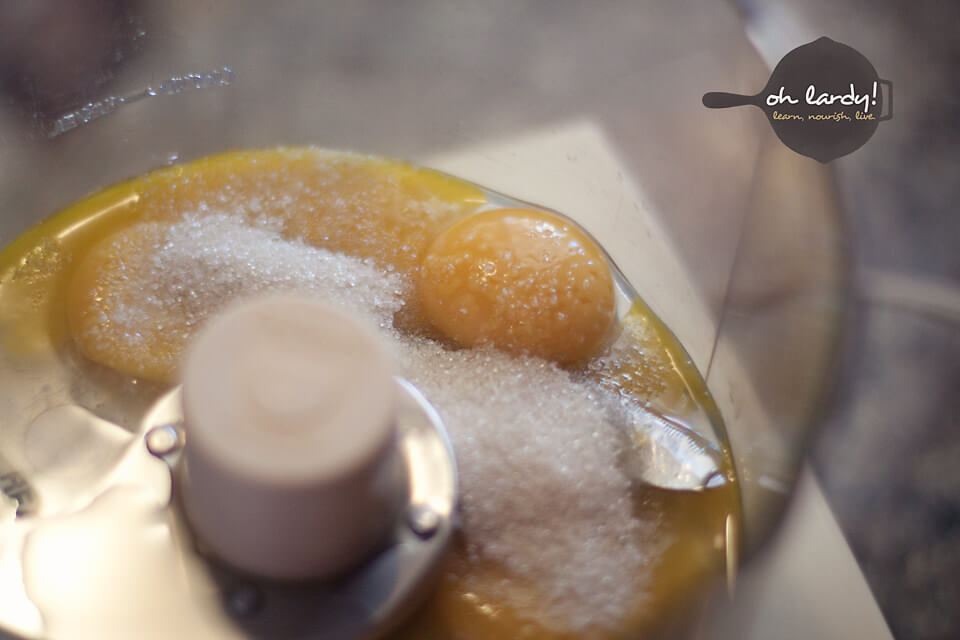
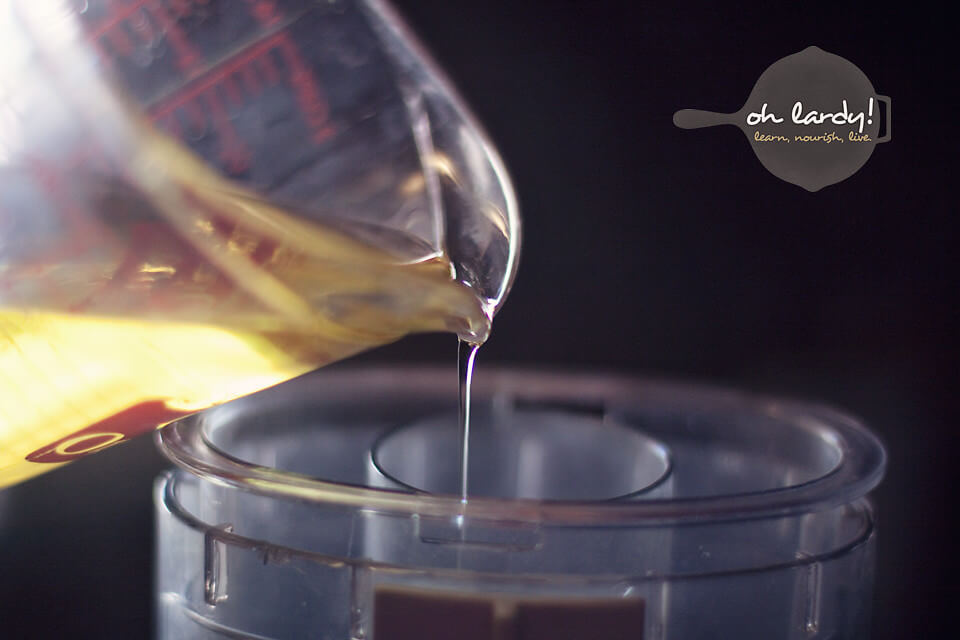
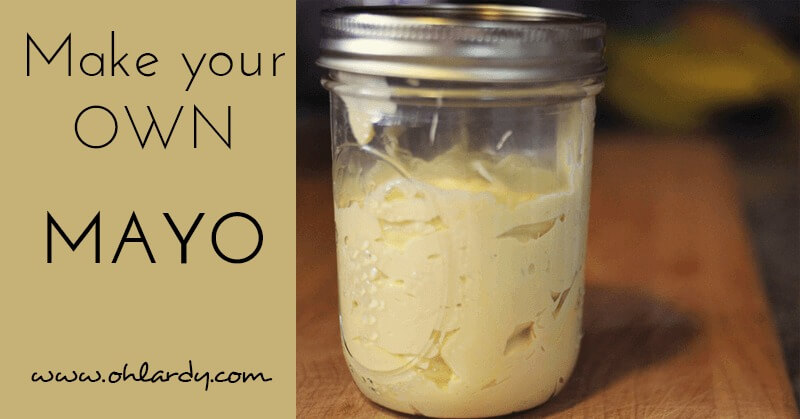
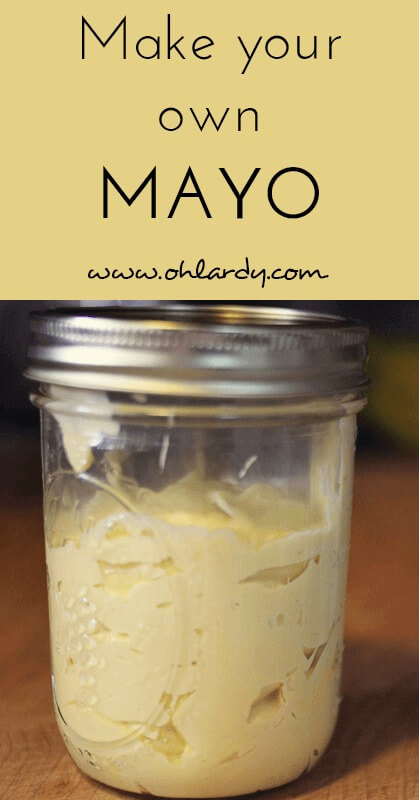
The bacon fat mayo was absolutely phenomenal…for certain purposes, i.e. a savory sandwich, etc. I have also used avocado oil, walnut oil and macadamia nut oil. These all made excellent mayos, without a strong flavor of the oils. Adding a little mustard can jazz it up too! Maybe I will experiment with more flavors!
I was just going to say-what about walnut oil, pecan oil or avacado oil…even quality grapeseed oil would probably be great.
I am going to use a combo of my cousin’s walnut oil and our local avacado oil for this recipe
I am not sure how i found your site, but i am soooo glad i did! i have been perusing it all evening. i just bought milk today to make yogurt. I found your beet kvass recipe and that will be happening as soon as i have whey from the yogurt. And yay! Finally a mayo recipe worth trying! Your site is beautiful, easy to navigate, and well written. thank you for such awesome info!
Thank you so much for visiting! We hope to ‘see’ you again soon!
Is the whey the powder kind they sell at nutritional stores, or something you made?
Whey is the liquid that is in yogurt. Here is a link on how to strain yogurt to get whey (https://ohlardy.com/how-to-make-your-own-greek-yogurt) You can absolutely make the mayo without whey. It just will not be lacto-fermented, which simply means it will not have the probiotic benefit and will only last a week or two in the fridge. Lacto-fermented mayo has probiotic benefits and will last months in the fridge.
Thank you! I’m just learning the importance of fermenting. I went to buy mayo today and they didn’t have the stuff I usually get and I just couldn’t bring myself to buy mayo made with soybean oil, even if it was organic. And your recipe for sour cream made me so happy as it’s very hard for me to find it without carrageenan around here! My kids really like ranch dressing dip (another thing I can’t bring myself to buy). Thanks for testing this stuff out! I look forward to hearing what you come up with that your husband likes! I’m pretty sure I’m in the same boat on mayo!
I like using a mix of oils for my mayonnaise. Currently, I use 1/3 cup avocado oil, 1/3 cup extra virgin olive oil, and 1/3 cup melted, clarified butter, plus a tablespoon of walnut oil . . . in this case, the butter softens the slight bitterness of the olive and avocado oils. It’s quite lovely. Now, I’m quite eager to try fermenting it! Thank you for your wonderful posts and inspiration.
oooohhh..butter sounds like a lovely addition! Thanks for sharing! -tm
for you hubby: use 3/4 Organic Sunflower Oil and 1/4 Organic Virgin Olive Oil. I produced the best Mayo yet. All Sunflower wasn’t as good and all Olive Oil was too much Olive Oil. The oil mix above was the winner of all in flavor.
I’m wondering if maybe I added the oil too fast? Mine is very liquidy (I didn’t use whey). Did I not blend it long enough or does it just need to refrigerate first?? Thanks!
It is hard to say, but adding oil too fast definitely results in a liquidy mess. The oil needs to be added drop by drop, or in a super slow stream.
I made this a couple weeks ago and it is wonderful!! One question though, the mayo has hardened. I have it in a mason jar in the fridge. It still smells good and taste good, it’s just hard. Any ideas? Thanks!!
Did you use coconut oil? If so that becomes solid in the fridge. Just leave at room temp for a little bit to soften!
Yes!! Oh thanks for reminding me. 🙂
So glad I didn’t toss it.
If I’m too impatient to make whey, will a dollop of yogurt do the trick?
I would try to pull of the liquid off the yogurt. You could try the yogurt if you don’t want to do that. Let us know!
Instead of sugar I put a tsp. of honey for sweetness.
Hello Ladies, I was checking out your posts on fermented foods when I saw your ferment mayo. I have been making my own mayo for 32 years with an immersion blender which I had purchased to make baby food for my 2nd son, this how I know it is 32 yrs. I have always used whole eggs from reputable sources, and my oil of choice is Sunflower seed oil which I don’t believe is a GM product yet. Sometimes I add a percentage of olive oil but never more than half because it is overpowering. This is also the recipe I used at my breakfast Cafe, I am now retired from that.
It is simply,
One whole egg, one cup sun seed oil, 2 tbsp apple cider vinegar, 1/2 tsp salt and 1/2 tsp dry mustard or 1 whole tsp Dijon mustard. I can also tell you that at home I have used my mayo up to three weeks old and with no change in its quality, at the cafe we used it much quicker, making it daily. Keep it refrigerated of course. If using an immersion blender, put all the ingredients in a goblet just wide enough to accommodate the blender end with some air space above for the oil to move around, but Do Not stir up the ingredients, keeping the blender end at the bottom, allow the oil to be drawn down into the mix slowly and make sure the emulsion has begun before drawing up the wand to incorporate the rest of the oil. Should the emulsion not happen then you can put another fresh egg into a separate goblet add a small portion of the mix and start to blend, slowly pouring in the rest of the mix, the emulsion should take using this process.
I will try adding a ferment to my mix to see how it tastes.
Thank you. Birgit
Why add sugar–Sugar is what you want to avoid at all costs. Add Stevia instead!
You mentioned bacon fat, which got me wondering if lard could be substituted? Now typically it is firm and not easy to pour unless heated, and I also wonder how this might effect the outcome?